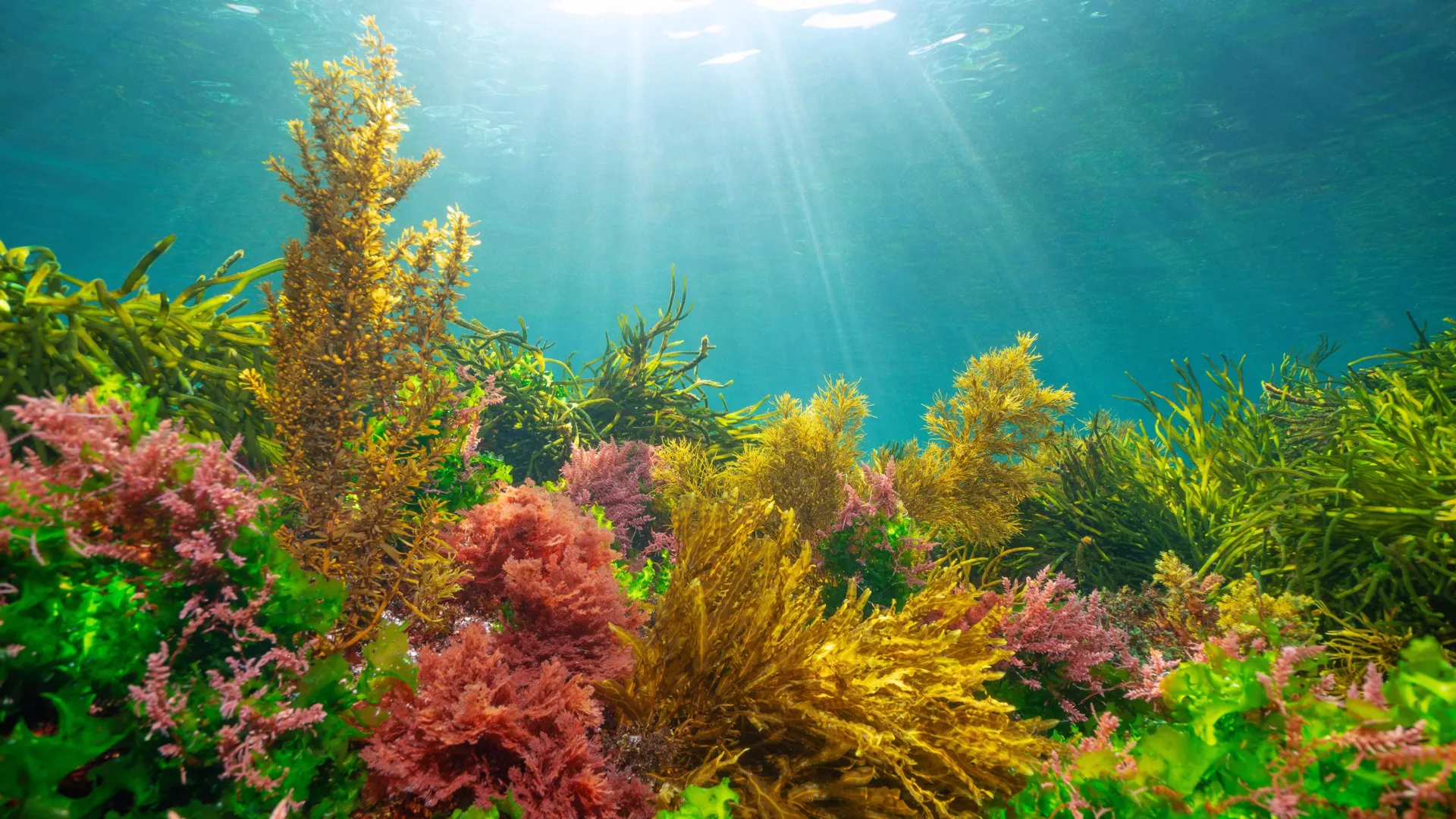How algae learned to harness the Sun without getting burned
Algae’s secret sunlight shield, siphonein, may hold the key to smarter solar tech.
- Date:
- October 22, 2025
- Source:
- Osaka Metropolitan University
- Summary:
- Under the sea, green algae have evolved a clever way to handle too much sunlight. Scientists found that a special pigment called siphonein acts like a natural sun shield, protecting the algae’s delicate photosynthetic machinery from burning out. Using advanced imaging and simulations, researchers showed how siphonein helps algae safely manage excess light energy. The discovery could inspire new solar technologies that mimic nature’s built-in protection systems.
- Share:

A day of strong sunlight can spoil more than just a beach outing -- it can also harm the process of photosynthesis, the way plants and other organisms convert sunlight into energy. Underwater, however, certain algae have evolved a unique way to stay protected. Researchers from Osaka Metropolitan University and their collaborators discovered that a pigment known as siphonein helps marine green algae continue photosynthesizing efficiently, even under intense light.
Protecting the Machinery of Photosynthesis
Photosynthetic organisms use complex molecular systems called light-harvesting complexes (LHCs) to absorb sunlight and convert it into usable energy. When chlorophyll, the green pigment central to photosynthesis, absorbs light, it becomes excited and passes that energy to reaction centers that fuel chemical processes. Under too much light, though, chlorophyll can enter a dangerous "triplet" state, producing reactive oxygen molecules that can damage cells.
"Organisms use carotenoids to quickly dissipate excess energy, or quench these triplet states, through a process called triplet-triplet energy transfer (TTET)," said Ritsuko Fujii, lead author and associate professor at the Graduate School of Science and Research Center for Artificial Photosynthesis at Osaka Metropolitan University.
Until recently, the exact details of how this protective process works were not well understood.
A Closer Look at Codium fragile
To investigate, the research team turned to Codium fragile, a type of marine green alga. Like land plants, it has a light-harvesting antenna complex called LHCII, but it also contains rare carotenoids such as siphonein and siphonaxanthin. These pigments allow the algae to use green light -- common in underwater environments -- for photosynthesis.
"The key to the quenching mechanism lies in how quickly and efficiently the triplet states can be deactivated," said Alessandro Agostini, researcher at the University of Padua, Italy and co-lead author of the study.
The researchers used electron paramagnetic resonance (EPR) spectroscopy, a technique that directly measures triplet excited states, to compare spinach with Codium fragile. In spinach, traces of harmful chlorophyll triplet states remained. But in Codium fragile, those signals disappeared entirely, showing that its carotenoids successfully neutralize the damaging energy.
"Our research has revealed that the antenna structure of photosynthetic green algae has an excellent photoprotective function," Agostini said.
How Siphonein Shields Algae From Sun Damage
By combining EPR data with quantum chemical simulations, the researchers identified siphonein, located at a critical binding site in the LHCII complex, as the key pigment responsible for this defense. They also revealed how its molecular structure and positioning make it especially effective at dispersing excess energy.
These findings show that marine algae have evolved specialized pigments not only to absorb the blue-green light available underwater but also to withstand the damaging effects of intense sunlight.
From Ocean Discovery to Solar Innovation
Beyond improving our understanding of photosynthesis, this research could influence the design of bio-inspired solar technologies that protect themselves from light damage. Such systems might lead to more durable and efficient renewable energy solutions.
"We hope to further clarify the structural characteristics of carotenoids that increase quenching efficiency, ultimately enabling the molecular design of pigments that optimize photosynthetic antennae," Fujii said.
The study was published in Cell Reports Physical Science.
Story Source:
Materials provided by Osaka Metropolitan University. Note: Content may be edited for style and length.
Journal Reference:
- Alessandro Agostini, Soichiro Seki, Andrea Calcinoni, Lopa Paul, Agostino Migliore, Ritsuko Fujii, Donatella Carbonera. Siphonein enables an effective photoprotective triplet-quenching mechanism in green algal light-harvesting complexes. Cell Reports Physical Science, 2025; 6 (10): 102873 DOI: 10.1016/j.xcrp.2025.102873
Cite This Page: